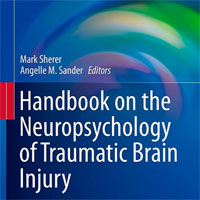Tag: sepsis
SOFA score may be best to identify sepsis in the ICU
Among critically ill patients admitted to the ICU with a suspected infection, defining sepsis by an increase of two or more points in the Sequential Organ Failure Assessment (SOFA) score yielded greater prognostic accuracy... read more
Bad news for sepsis-3.0: qSOFA fails validation
Sepsis 3.0 replaced the SIRS criteria with a new risk-stratification tool, qSOFA. qSOFA was initially developed within the Sepsis-3 publication itself. Until now, qSOFA has never been validated. The value of qSOFA vs. SIRS... read more
Effect of Omega 3 polyunsaturated fatty acids in major burn patients
The inclusion of ω-3 PUFAs in a low fat diet in ICU burned patients was associated with significant clinical benefits compared to a conventional low fat diet, with lower rates of severe sepsis, septic shock and pyloric dysfunction.... read more
Impact of transfusion on patients with sepsis admitted in ICU
Red blood cell transfusion (RBCT) threshold in patients with sepsis remains a matter of controversy. A threshold of 7 g/dL for stabilized patients with sepsis is commonly proposed, although debated. The aim of the study was... read more
Towards precision medicine for sepsis patients
Over the last decade it has become clear that the immunological response and clinical course in sepsis patients is too complex to simply regard it as hyperinflammation-induced organ failure. In contrast to the previous belief... read more
Recognize Sepsis as Separate Cause of Illness and Death
Sepsis should be recognized as a separate cause of illness and death around the world. This focus would help efforts to prevent sepsis by improving hygiene, nutrition and vaccination rates and also lead to timely treatment,... read more
Sepsis Algorithm a Deadly Marker
An attempt by a Phoenix, AZ, hospital to develop a marker for deadly sepsis instead found that the algorithm identified patients at an increased risk of dying. Increasingly, algorithms govern daily life, playing an important... read more
Disruption of the microbiota across multiple body sites in critically ill children
Microbiota in critically ill children differs sharply from the microbiota of healthy children and adults. Acknowledgement of dysbiosis associated with critical illness could provide opportunities to modulate the microbiota... read more
New Blood Draw Protocol can reduce risks for pediatric patients
Researchers report that implementing a checklist-style set of procedures appears to cut almost in half the number of potentially unnecessary blood culture draws in critically ill children without endangering doctors'... read more
Outsourced Hospital Cleaning linked to MRSA
Analysis of English NHS hospitals suggests that employing private as opposed to in-house cleaners is a false economy. While it may reduce costs, it could also raise risk of infection by methicillin-resistant Staphylococcus... read more
Think Sepsis and Act Fast
New attention to sepsis including revised definitions, updated guidelines, and new CMS reporting requirements aims to save lives through prevention and prompt and effective management of infections. CDC released a new Vital... read more
Blood culture decision algorithm tied to PICU admissions
A standardized approach to blood cultures in the pediatric ICU successfully reduced collections from central venous catheters, investigators at a single center reported, with no subsequent uptick in adverse events.... read more
Three-year mortality in 30 day survivors of critical care with AKI
Acute kidney injury was not an independent risk factor for 3-year mortality among 30-day survivors. Increased 3-year mortality among patients with AKI who survive critical illness may not be related to AKI per se, but rather... read more
Wires and Peripherally Inserted Central Catheters
An increasing number of patients are being admitted to critical care units with multiple chronic medical conditions. In some of these patients, intravenous access is a challenge. With a concern for indwelling catheter infections,... read more
Sepsis on the Wards Manuscript Available Open Access
Surviving Sepsis Campaign supporter, the Gordon and Betty Moore Foundation, recently funded open access with its Sepsis on the Wards grant for original research.... read more
Plasma cytokine levels predict response to corticosteroids in septic shock
Plasma concentration of selected cytokines is a potential predictive biomarker to identify septic shock patients that may benefit from treatment with corticosteroids.... read more
Sepsis-3 definitions predict ICU mortality in a low-middle-income country
The medical records of 957 patients were retrieved from a prospectively collected database. Serum lactate improved accuracy for values higher than 4 mmol/L in the no-dysfunction and septic shock groups.... read more
Impact of a high loading dose of amikacin in patients with severe sepsis or septic shock
With a loading dose of 30 mg/kg of amikacin, concentration was potentially suboptimal. The pharmacodynamic target (60 mg/L < C max < 80 mg/L) recommended by French guidelines was reached in 41.8% of patients and was... read more
Antibiotics Linked to Sepsis Risk
Disturbing healthy bacteria during hospital admission associated with later sepsis.... read more
Ultraviolet air sterilizer reduces sepsis and mortality in cardiac surgery patients
An ultraviolet air steriliser reduces sepsis and mortality in cardiac surgery patients, according to this research. The investigators found that sepsis occurred in 3.4% of patients using the steriliser compared to 6.7% patients... read more
Hospitals struggle to address terrifying and long-lasting 'ICU delirium'
Doctors and nurses across the country are now pushing an ambitious campaign to change practices in intensive care units to reduce cases of "ICU delirium".... read more









